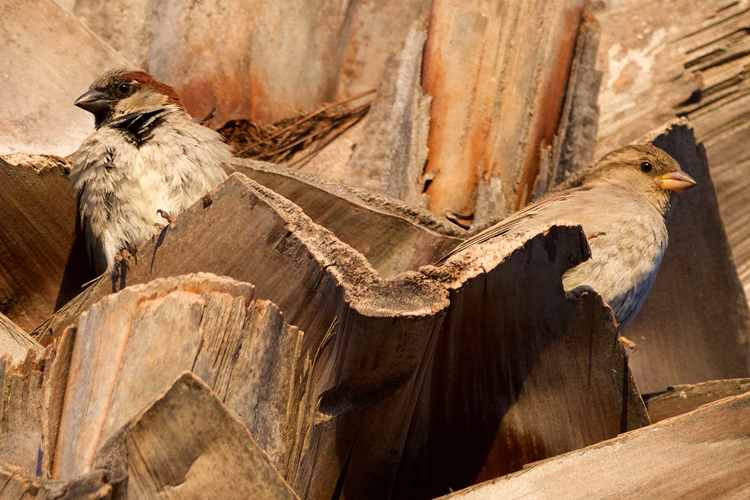Melanins are the most common pigments providing coloration in the plumage and bare skin of birds and other vertebrates. Numerous species are dichromatic in the adult or definitive plumage, but the direction of this type of sexual dichromatism (i.e., whether one sex tends to be darker than the other ones) has not been thoroughly investigated. Using color plates, the presence of melanin-based color patches in 666 species belonging to 69 families regularly breeding in the Western Palearctic was analysed. Sexual dichromatism based on melanins in at least one part of the skin involved 205 (30.7%) species. The body parts contributing more frequently to dichromatism were the dorsal areas, head and breast, whereas the less dichromatic body parts were the belly and the exposed parts of the skin (i.e., bill and legs). Regarding the phylogenetic spread of dichromatisms, 37 (53.6%) families contained at least one species with melanin-based sexual dimorphism in the definitive adult plumage. As for the direction of the color difference, males are darker than females in a majority of species, meaning that males tend to produce more eumelanin and females tend to synthesize more pheomelanin. This survey has revealed the high prevalence of melanins in the emergence of sexual dichromatism in birds, at least in the Western Palearctic. Whether the described pattern is due to sexual selection promoting more conspicuous males or to natural selection for more cryptic females remains to be determined. Given that pheomelanin synthesis concurrently consumes the antioxidant glutathione but also reduces toxic cysteine, sex-biased physiological factors should also be given consideration in the evolution of bird plumages. informacion[at]ebd.csic.es Negro et al (2018) Melanin-based sexual dichromatism in the Western Palearctic avifauna implies darker males and lighter females. J Avian Biol doi:10.1111/jav.01657


 Las altas temperaturas están provocando que las lagunas y las marismas de Doñana pierdan agua rápidamente
Las altas temperaturas están provocando que las lagunas y las marismas de Doñana pierdan agua rápidamente




